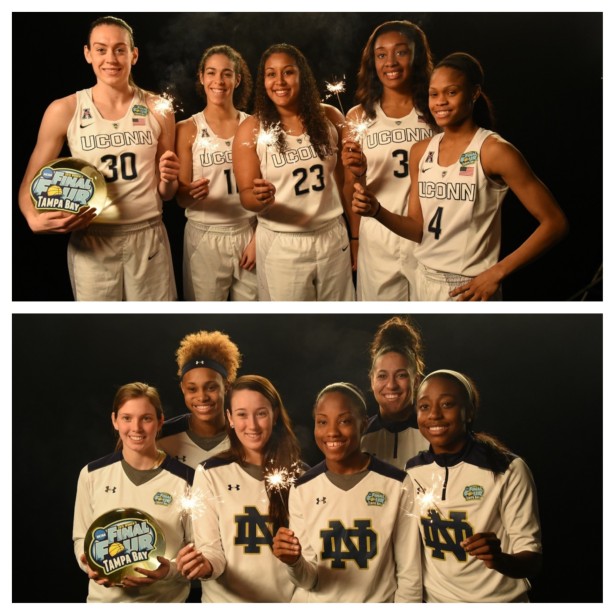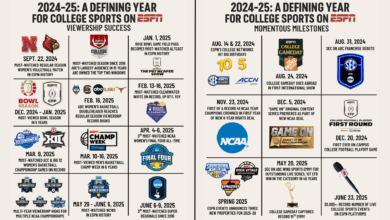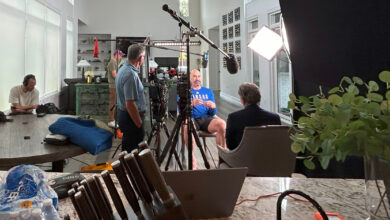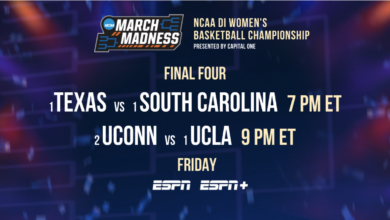The Women’s Final Four speaks to the heart of March Madness

Two-time defending national champion UConn meets Notre Dame in a rematch of the 2014 title game (tonight, 8:30 ET, ESPN/Watch ESPN). Play-by-play commentator Dave O’Brien, analyst Doris Burke and sideline reporter Holly Rowe cover the game from Amalie Arena in Tampa, Fla. For more information, visit ESPN MediaZone.
If you write for a long-enough time, eventually you’ll forget at least half of what you’ve ever written. But I’ll always remember the first live column I wrote for ESPN.com – then ESPNet.SportsZone.com – from the Women’s Final Four.
It was 1997, my fourth Final Four, but first since I’d started as a columnist for the website that changed my career. I’d covered women’s basketball starting in 1984 while in college. But most of that was local or regional, because newspapers I worked for didn’t think there was much of an audience for national coverage of the sport.
When I started to write for the ESPN site in the fall of 1996, the response from readers was immediate via e-mail. There definitely were fans who wanted a national perspective of the sport. It was the start of a sustained connection for me with the women’s basketball community from coast to coast, and in these past two decades the website has grown side-by-side with the sport.
That 1997 Final Four was in Cincinnati, with the semifinals pitting Old Dominion versus Stanford and Tennessee versus Notre Dame. That first game remains one of the most emotional and riveting I’ve ever seen. And Stanford’s locker room after an 83-82 overtime loss is still the saddest group of players I’ve seen after a disappointing defeat.

(Phil Ellsworth/ESPN Images)
As I sat down to write that night, I knew I needed to be respectful of the pain that those kids were in because one of their biggest goals had not been achieved. I didn’t want to be maudlin, but truly convey how they felt. Usually, athletes’ tears in the NCAA tournament are because they are experiencing the end of something precious to them – their college careers and/or special seasons. It is never really just about that one game.
The sentence I opened the column with was, “You are an intruder into their grief.” That is how I’ve always felt when talking to athletes after a season-ending loss.
But I also realize those stories are often the most memorable because of what they reveal about the souls of the athletes.
Yes, we in the media “intrude,” but if we do so thoughtfully, guided by both our journalistic instincts and our compassion, we can tell stories that go to the heart of why people love being a part of March Madness – even when it hurts them.







